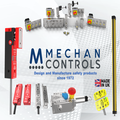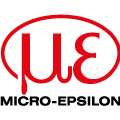
Posted to News on 16th Sep 2007, 10:14
Rapid-manufactured camshaft cover deemed a success
CRP Technology and Ilmor are implementing rapid manufacturing in a four-stroke MotoGP engine development, and the first dynamometer test is described as a complete success.
CRP Technology and Ilmor have collaborated to develop a new design of rapid-manufactured camshaft cover to support the camshaft bearings in a four-stroke, 800cc racing motorcycle engine. This camshaft cover - which mounts on the cylinder head - must cope with the camshaft running at up to 9000rpm and an average working temperature of 130-140degC, as well as resisting attack from the lubricating oil.
Every material has an upper limit on its recommended operating temperature, as mechanical properties decrease when the working temperature increases. The recommended limit for Windform XT is 130/140degC, but in some case 150-160degC can be reached. The limiting factor comes from the thermoplastic base that melts at around 180degC.
At a race track such as Bahrain or Dubai, even if the ambient temperature is significantly higher than the average at other circuits, the working parameters of the engine (ie water and oil temperature) must remain under the limits imposed by the manufacturer, so there are usually specific radiators and special aero configurations to ensure better cooling of the engine.
The improvements achieved by the camshaft cover project are as follows:
- Lightness (of the engine head cover) - a 31 per cent reduction. Being on top of the engine, each gram saved means better rideability for the bike, as the centre of gravity can be lowered).
- Reliability.
- Fast modifications and production (rapid manufacturing enables changes to the design to be implemented mid-season).
- Better engine cooling.
The result is a composite part in which the different materials have specific functions or structural characteristics.
Part construction
A main-frame is manufactured from a metal-ceramic matrix (aluminium MMC) and, around this, a shell is created using carbon fibre-filled resin (Windform XT). The shell is therefore created by powder sintering high-performance Windform XT directly from a CAD model in just a few hours.
The main areas of the part(camshaft seats) are made by a series of simple machining and welding processes, while the prototype shell has a complex shape. In fact, being made by selective laser sintering (SLS), any complex shape can be obtained without undercut problems (which is a limiting factor with CNC machining) or supports (a limit with other rapid prototyping/manufacturing technologies).
SLS technology also enables engine components - such as intake trumpets, water pump covers, oil pump covers, airboxes and sump scrapers - to be manufactured.
Ian Watson, Ilmor's Senior Designer, explains about the dyno test: "The engine ran with the cam cover. It only did something like the equivalent of 100km, but it was all full-speed power-run testing. There was absolutely no problem at all - no leaks, no performance difference - and it is judged to be a complete success. On disassembly, all the internal head components appear to be in normal condition, there is no sign of any distress or any potential problems. However, the bond between the aluminium bearing straps and the WindForm has failed. The straps are still in place but it is possible to move them by hand. I am not sure why this has happened. There is no sign of any movement (no fretting visible), so I think that whilst it was clamped up it was perfectly okay. Perhaps the differential expansion is the culprit. I am not too disappointed by the glue failure.
Design with RM in mind
"I think that the situation we have is that we have enough evidence to say that it would be possible to consider designing 'major constructional components' with both the material and the process. However, this will only be completely successful if the component and surrounding components are designed from the outset with the process and material in mind.
"I think you have done a fantastic job with the cam cover; however, I think that the difficulties with situations like the aluminium/WindForm bond are somewhat artificial in that, in this case, it became a necessity due to the overall design of the cylinder head with regard to the relative positioning of the cam bearing straps etc.
"If I were to design the engine again and wanted to have a structural WindForm cam cover (rather than separate cam caps/ladder and a cover just to seal the oil), I would look at a different stud arrangement, the camshaft spacing and the camshaft bearing size to allow the cover to be one-piece with a plain bearing shell. Maybe we would still need to have some inserts to help with distributing the clamping load, but such things would be relatively easy to organise.
"I think that the whole subject of making things by 'rapid' processes is very exciting and opens the door to loads of things that are not currently considered. But, in the same way that all through the design process of a cylinder head (for example) the designer currently is making decisions based on the knowledge that it is going to be produced as a sand casting, the process needs to be considered with an open and fresh mind to take the whole design forward to new ground. I think that this is a point which came across at the Loughborough conference but is something a lot of people seem to have difficulty with, perhaps because it threatens their current 'comfort zones'!?"
It seems that, with rapid manufacturing, the only limit is the design process and therefore the designers' knowledge. For open-minded designers, a new path is ready to be pursued.
Want the latest machine building news straight to your inbox? Become a MachineBuilding member for free today >>

















